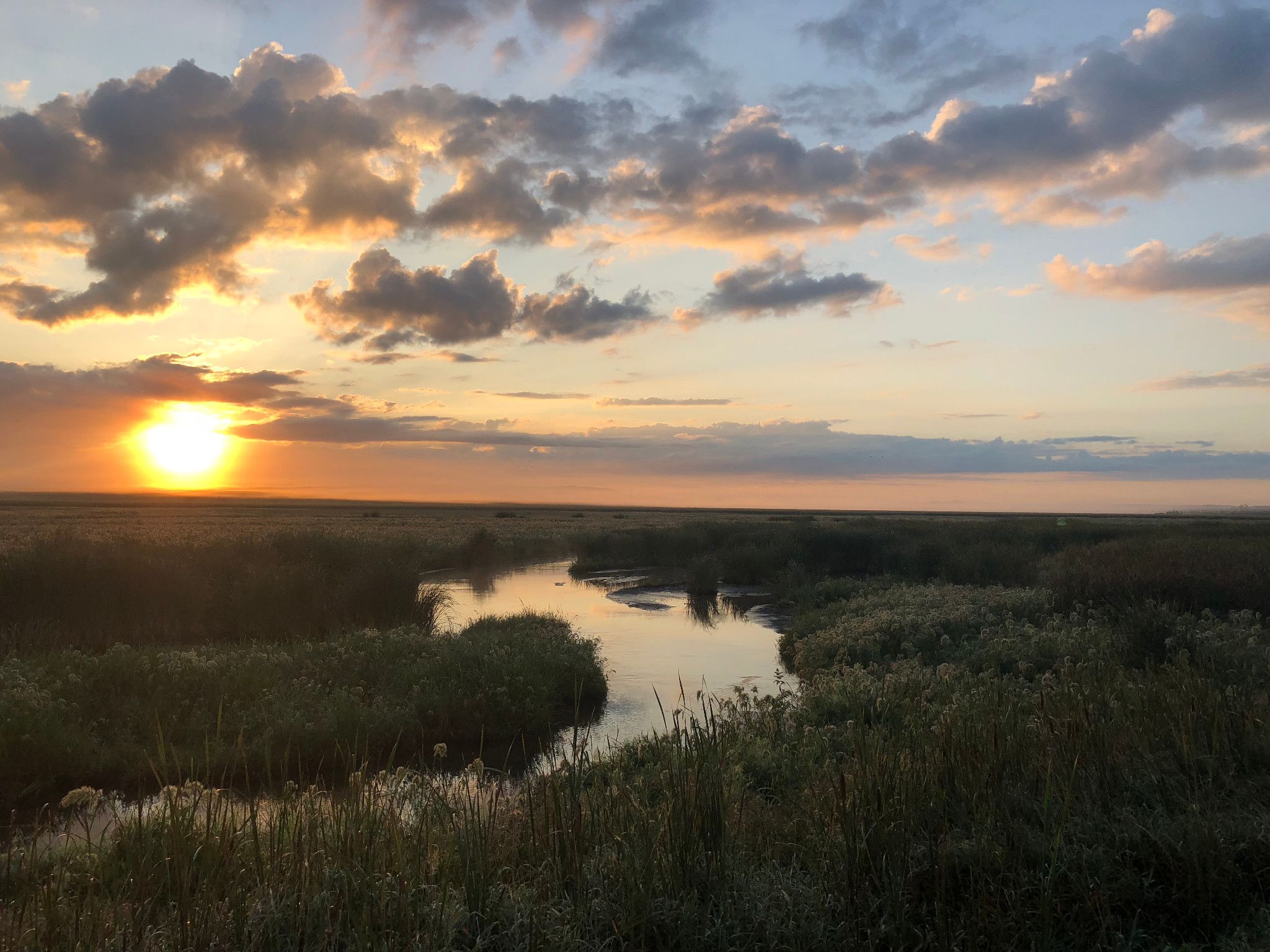Theresa Marsh Wildlife Area

Theresa Marsh Wildlife Area includes nearly 5,500 acres of state-owned lands and 300 acres of publicly accessible easements located in northwestern Washington and northeastern Dodge counties. The East Branch of the Rock River flows north through the core of the wildlife area. Wetlands, primarily emergent marsh and bottomland hardwood forest, border the river and cover 80% of property. Uplands are composed of a mix of grassland, farmland, and upland hardwood forest.
History
A glacial lake with a southern outflow once occupied the marsh. Subsequent glacial activity created the present outlet of the marsh flowing to the west and resulted in a vast tamarack and lowland hardwood forest that was logged during settlement times, leaving open marshland. Over the years various agricultural enterprises were attempted in drained portions of the marsh including cattle ranching, canarygrass seed production, muck farming and mint farming, which ultimately failed due to short growing seasons and flooding. The Wisconsin Conservation Commission approved acquisition of the Theresa Wildlife Area in 1948, and by the late 1960s nearly 5,000 acres had been purchased. In 1968, a dam was constructed on the East Branch Rock River to allow water level control over hundreds of acres for waterfowl management. In subsequent years several sub-impoundments were constructed across the wildlife area to improve brood-rearing and stopover wetland habitat for waterfowl, and uplands were planted to grassland to provide nesting cover for mallard and blue-winged teal.
Habitat and Wildlife Management
Theresa marsh is managed for wildlife production, as a migration stopover area for waterfowl and other birds, and to provide a variety of recreational opportunities including hunting, trapping, fishing, bird watching, and hiking.
Water levels at Theresa Marsh are managed to provide diverse wetland habitat, primarily emergent and deep-water marsh. Beginning in spring, some wetland impoundments are dewatered to expose mudflats and provide shallow water for migrating shorebirds and to allow germination of wetland plants. Wetland annual plants produce large, energy-rich seeds and attract an abundance of invertebrates. These stopover wetlands are reflooded in fall to make these food sources available to migrating waterfowl. In other wetland impoundments water is retained throughout the year to provide brood-rearing habitat for mallard, blue-winged teal, wood ducks, and Canada geese and nesting habitat for black terns. Periodically, prescribed fire is used in the marsh to manage invasive cattails and encroaching shrubs, increase plant diversity, and allow wetland annuals to germinate. Two waterfowl refuges provide food and resting areas for waterfowl.
Upland grasslands are dominated by tallgrass prairie. Grasslands are managed using periodic fire, mowing, and haying to provide nesting cover for mallard, blue-winged teal, and wild turkey and cover and forage for white-tailed deer, wild turkey, and ring-necked pheasants. Pheasants are stocked in upland grasslands throughout the pheasant hunting season.
Farmed fields of corn, hay, soybeans, winter wheat, and other crops provide forage and cover for a variety of wildlife species. Additionally, farming is used to prepare sites for conversion to prairie or forest.
Recreation
-
The Theresa Marsh Wildlife Area offers many recreational opportunities.
- Birding
- Cross country skiing (no designated trail)
- Dog training (class II) [PDF]
- Fishing
- Hiking (no designated trail)
- Hunting
- Archery and firearm hunting are allowed.
- Two wildlife refuges closed to all entry from Sept. 1 through Nov. 30 each year except for deer hunting during open gun and muzzleloader seasons.
- Pheasant hunting is prohibited after 12 p.m. beginning the third day of the season through November 3.
- Portable stands and artificial blinds may be used but must be completely removed from the property at the close of hunting hours each day.
- Paddling
- Trapping
- Wild edibles/gathering
- Wildlife viewing
Prohibited Activities
- Motorized boats (including trolling motors) during waterfowl season
- No target shooting No blocking access to gates with vehicles
- No stocking or releasing any wild or domestic animals
- No biking
- No horses
- No ATV/UTV riding or operation of other motor vehicles
- No overnight camping, parking or open burning
Maps
Download a map of this property here.
If you are interested in exploring this property further, you can access an interactive map.

